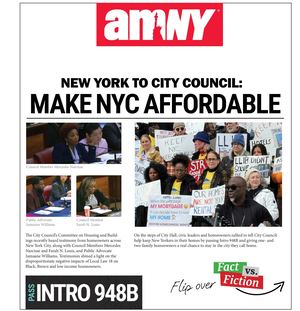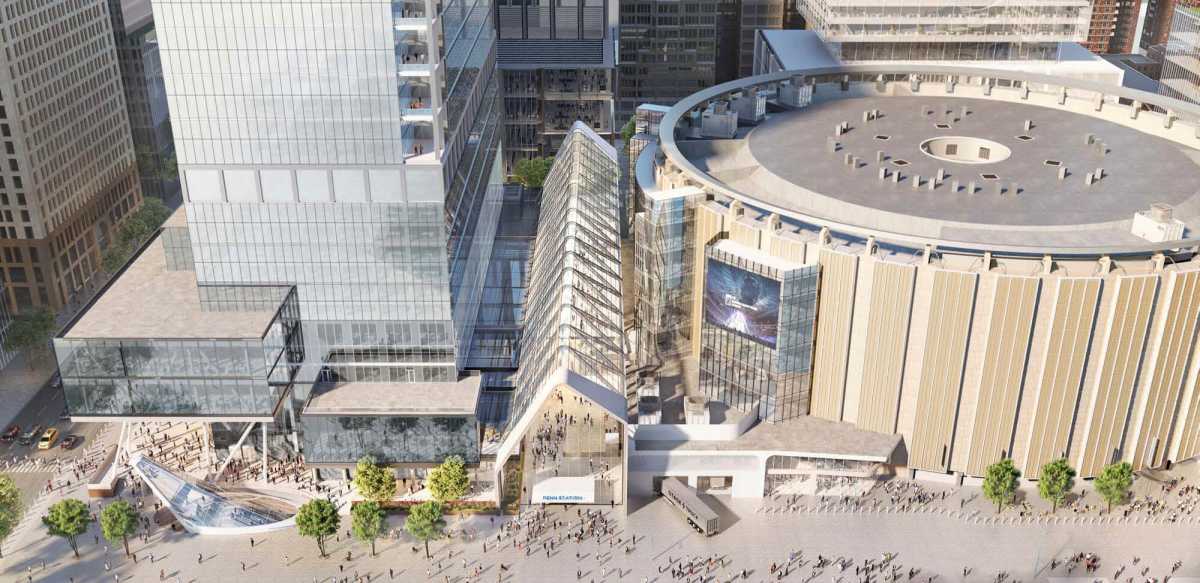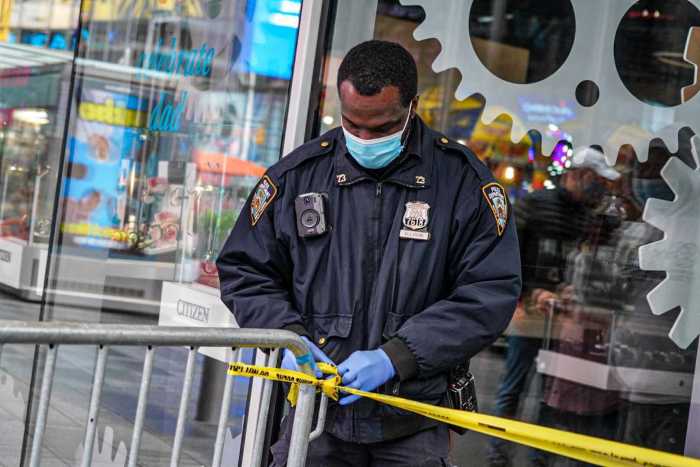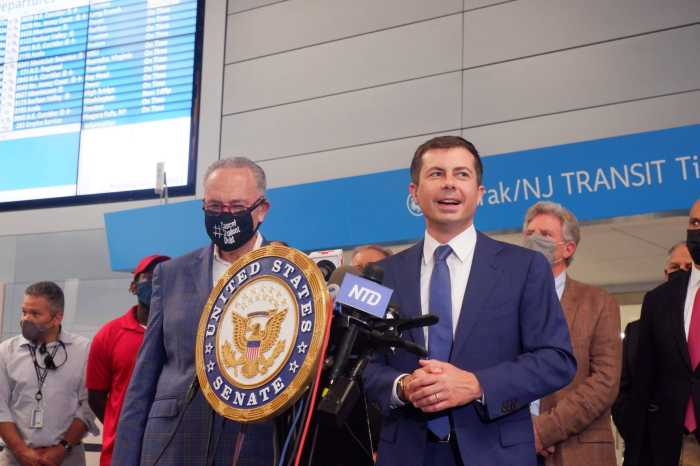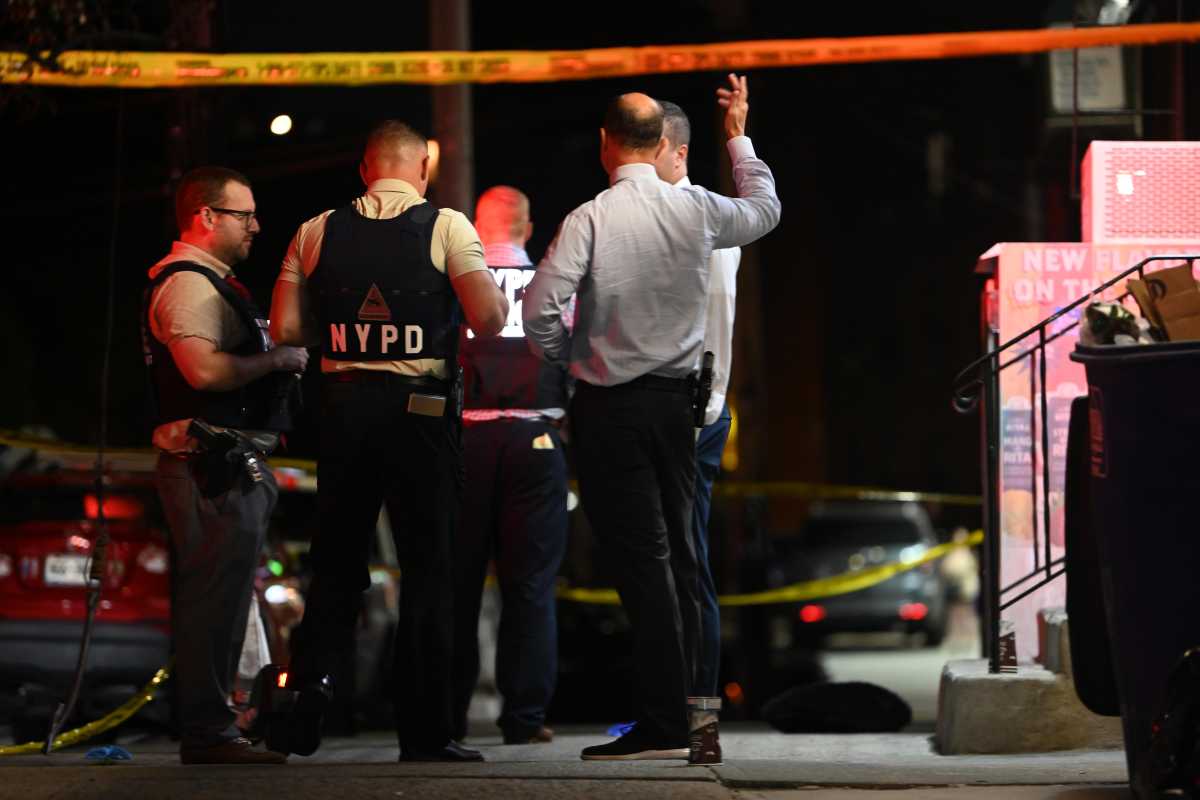Governor Kathy Hochul revived a massive redevelopment project around Penn Station, promising to beautify the beleaguered transit hub financed by the development of 10 skyscrapers around it.
“This day is a long time coming and I believe that we have the opportunity here to reimagine the entire future of Penn Station and the neighborhood,” Hochul told reporters during a Wednesday press briefing at her Manhattan office.
The governor unveiled the $7 billion proposal on Nov. 3, slightly altered from her predecessor Andrew Cuomo’s Empire Station Complex scheme, which the disgraced ex-governor first announced in January 2020.
Hochul’s proposal pared back the building height of the new towers and reduced the density by 1.4 million square feet, while building 1,800 residential units, including 540 restricted to certain income brackets.
The original plan under Cuomo faced heated opposition from advocates and preservationists, who took issue with the large-scale development and feared the destruction of historic structures within the project’s radius.
The new project is set to take 4-5 years once construction starts and focuses first and foremost on reconstructing the 1968 train station, the busiest transit hub in the Western Hemisphere that carried 600,000 travelers a day pre-COVID, more passengers than LaGuardia, JFK, and Newark airports combined.
Other connected projects like the southward expansion and the Gateway Project tunnels underneath the Hudson River to New Jersey will continue on their previous timelines.
By moving Amtrak operations to the new Moynihan Train Hall, the state can eliminate the bulk of the first underground level of Penn, creating a single-level double-height train hall that allows more light to flow into the notoriously dark and labyrinthine station.
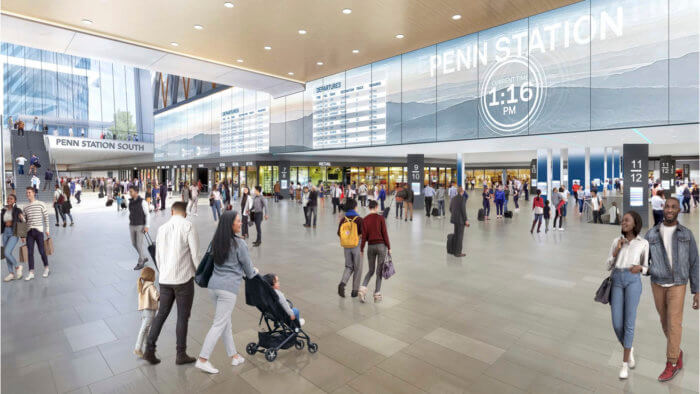
The plan creates a new underground corridor to the Herald Square subway station on the B, F, M, N, R, and W lines, and adds eight new entrances to Penn Station, 18 more escalators or stares, and 11 new elevators to platforms.
Hochul also said she wants to give the station a new name.
“Has anybody ever asked the question why we have the largest transit hub in the Western Hemisphere named after a neighboring state,” she said. “I believe the new station for New York should be named for a New Yorker or something to do with how iconic New York State and how amazing it is.”
“There’ll come a time when people say, ‘I never even heard of Penn Station,’” she added.
The station was named after the Pennsylvania Railroad which owned and built the iconic original station in 1910, which would be demolished in 1963 to make way for its much-reviled replacement.
The new plans also add about eight acres of open space around the station, including on reconfigured roads on 31st, 32nd, and 33rd streets.
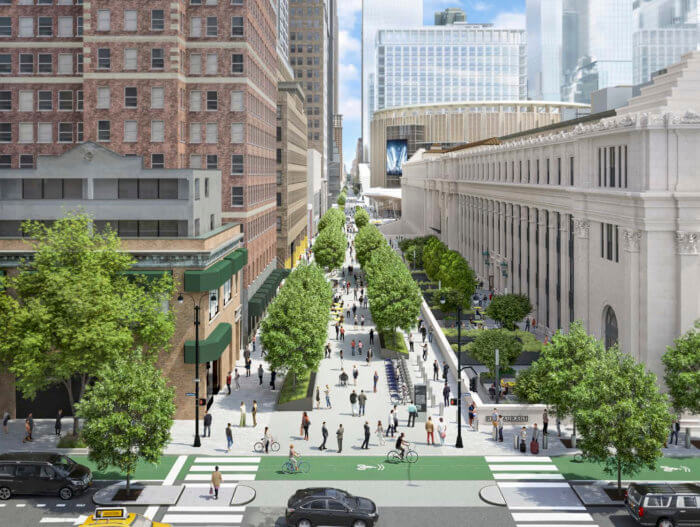
There the proposal calls for widened sidewalks, bike lanes, bike parking, seating, and slower vehicle speeds, also known as “shared streets.”
“People want to know what are cities be like after the pandemic. This my friends is the beginning of what it’s going to look like,” she said. “It’s more livable, it’s going to focus on New Yorkers, it’s going to right the wrongs of the past, finally, it’s going to jumpstart something that should have been done a long time ago, it’s forward-looking for decades to come.”
